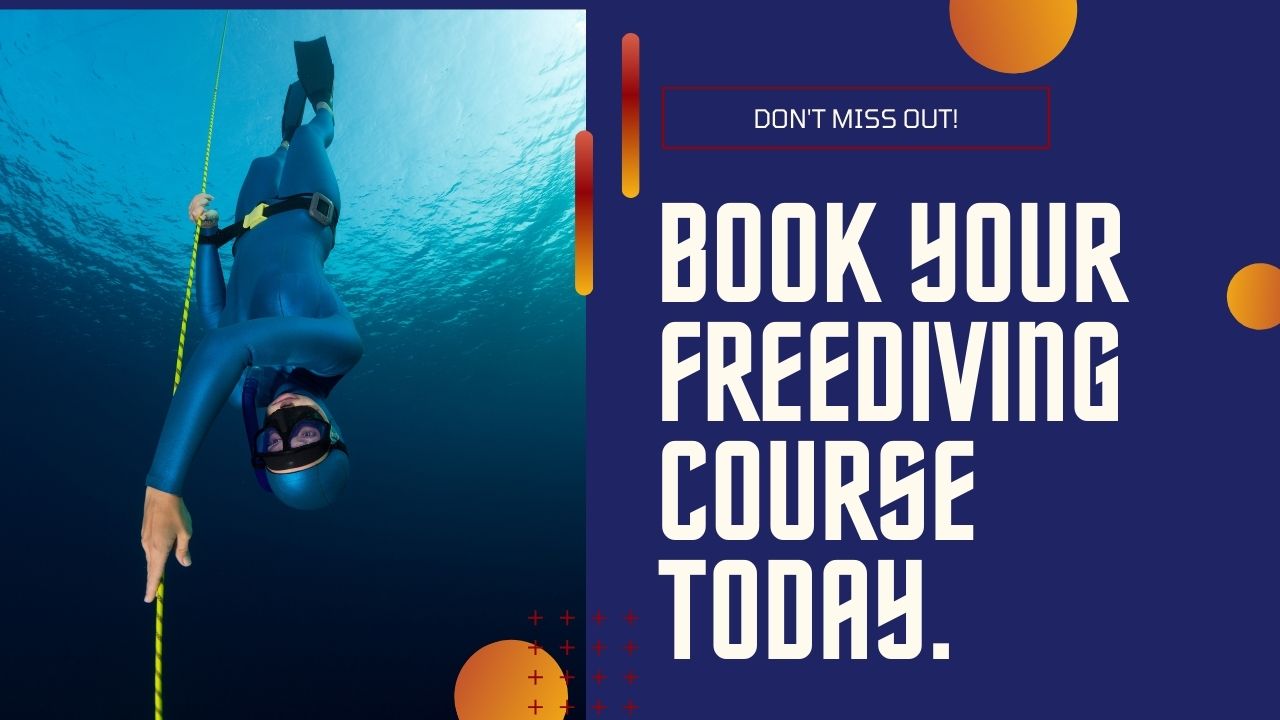You have 0 product(s) in your cart.
Abyss Scuba Diving
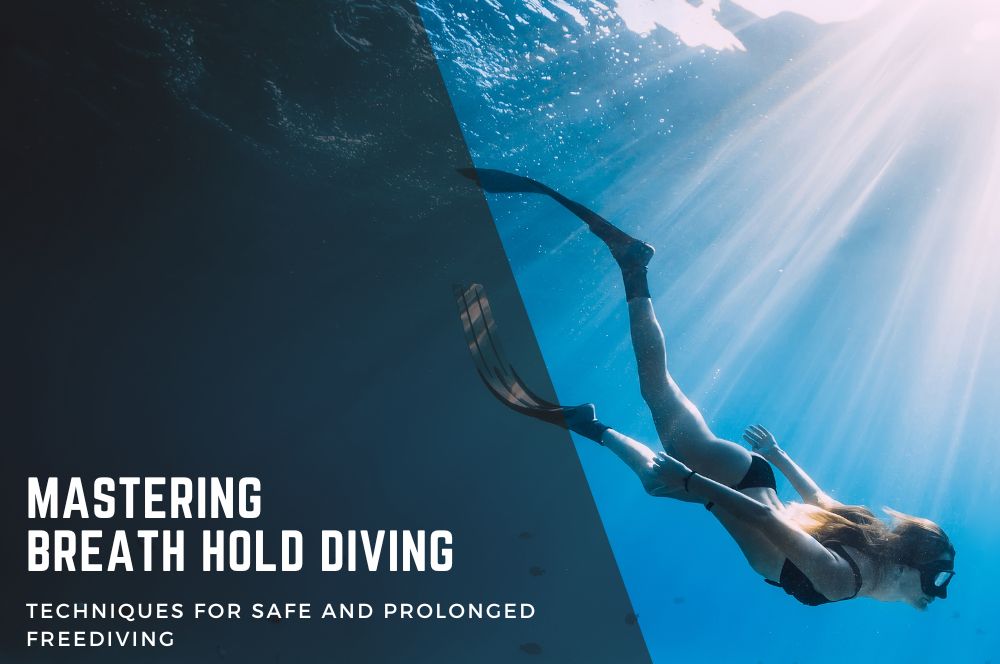
Mastering Breath Hold Diving: Techniques for Safe and Prolonged Freediving
Breath hold diving takes you into the blue on nothing but a lungful of air. If you’re looking to stay submerged longer and dive deeper safely, you’re in the right place. This guide delivers no-nonsense advice on training for greater breath-hold depth, mastering crucial safety precautions, and selecting the right equipment. Get ready to enhance your breath-holding skills with insights from experienced divers and practical steps to take before your next free dive.
Key Takeaways
-
Breath-hold diving, or freediving, is a form of underwater diving that relies on the diver’s ability to hold their breath, instead of using scuba gear, and involves training to extend breath-hold capacity and adapt to increased carbon dioxide levels.
-
Essential equipment for breath-hold diving includes specialized fins, low volume masks, and carefully selected weight systems, all designed to enhance efficiency and performance underwater.
-
Despite its risks, such as shallow water blackout and barotrauma, breath-hold diving can be practiced safely with proper training, adherence to safety protocols like the buddy system, and a focus on building physiological tolerance and mental conditioning.
The Essence of Breath Hold Diving
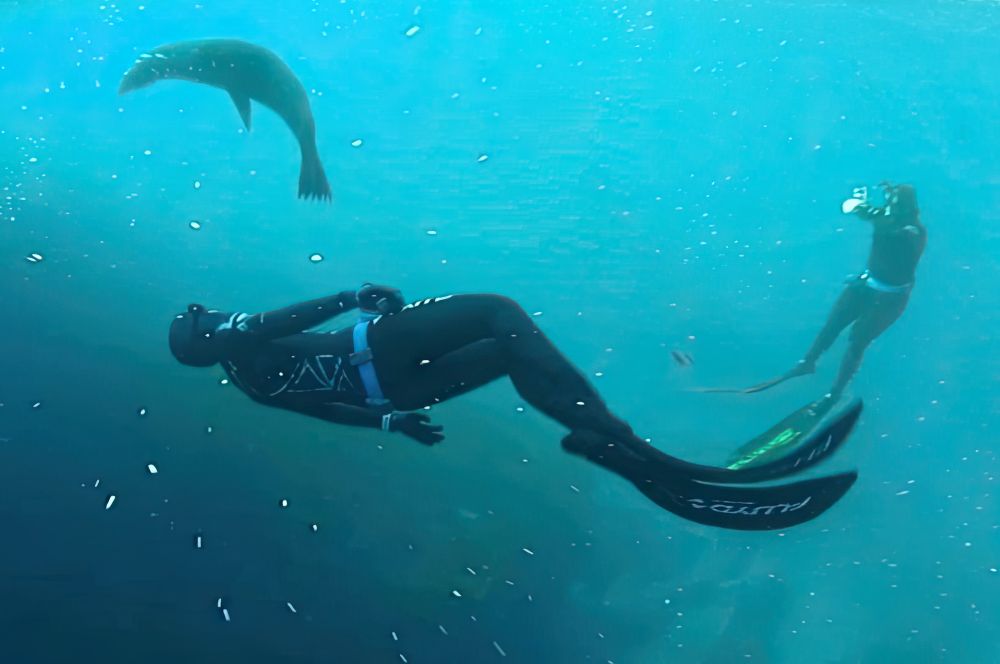
Breath-hold diving, or freediving, offers an exploration into our intrinsic connection to water. From ancient civilizations gathering sustenance from the sea to modern explorers seeking the profound silence of the deep, the history of human breath hold diving is rich and diverse. This discipline eschews the encumbrance of scuba gear, instead of relying on the diver’s singular ability to practice breath holding, which can transport one to depths typically ranging between 3 to 15 meters.
However, freediving extends beyond a simple plunge into the ocean’s depths. It is a deliberate challenge to human physiology, a test of both mental fortitude and physical conditioning. Regular individuals may find their breath-hold capacity limited, but trained breath-hold divers extend these boundaries through dedication and training, occasionally reaching the realm of deep breath-hold diving and extreme breath-hold diving.
The Human Diving Response
A remarkable phenomenon, known as the diving response, unfolds within us as we submerge. It’s a suite of reflexes that the human body shares with diving mammals, enabling life to be sustained even as we voluntarily step into an asphyxiating environment. Bradycardia, the slowing of the heart rate, coupled with peripheral vasoconstriction, which redirects blood to vital organs, are among the physiological changes that exemplify this response.
Elite breath-hold divers, through repeated exposure and training, have honed this diving response to impressive degrees, achieving a state of being that allows for greater tolerance to the oxygen deprivation and high carbon dioxide levels that come with deep breath-hold dives. This advanced adaptation is what distinguishes trained breath-hold divers from casual enthusiasts and is a testament to the profound capabilities of the human body when conditioned for the extremes of underwater diving.
Breath Hold vs. Scuba Diving
Despite both providing avenues to the underwater world, breath-hold diving and scuba diving offer distinct approaches and experiences. Scuba diving outfits the individual with a breathing apparatus, allowing for extended periods beneath the surface, but also comes with a host of training requirements and risks not present in breath-hold diving. The diver’s environment, too, differs markedly; where the scuba diver may wander the sea’s expanse, the breath-hold diver is intimately tied to the ebb of their own breath, the ascent always a looming presence.
Yet, it’s not merely about the lack of equipment or the dive’s duration that sets these practices apart. Breath-hold diving is often a solitary and meditative pursuit, one that pits the diver against their physiological limits in a silent world. In contrast, scuba diving is an exploration buoyed by the security of breathing air from tanks, a mechanical lifeline that frees the diver from the constraints of their own lung capacity.
Training for Depth: Preparing for Deep Breath Hold Dives

Diving into the depths on a single breath requires not only courage but also meticulous preparation. Training for deep breath-hold dives is an intricate tapestry woven from static apnea training, which bolsters diaphragm flexibility and lung capacity, and apnea walk training, conditioning muscles for the anaerobic work required when the urge to breathe is a pressing reality. This preparation is further enriched by a blend of physical stretches, mental exercises, and breathing techniques, setting the foundation for the deep diving adventures that beckon.
Such training is not for the faint-hearted. It is a regimen that challenges and expands the diver’s depth limits, pushing the body and mind to adapt to the crushing pressures of the deep. The ultimate goal is to achieve not just a single deep breath-hold dive but to engage in repetitive deep free diving, where each descent is a further exploration of the ocean’s mysteries and the diver’s own resilience.
Enhancing Lung Capacity
Mastering the art of lung capacity enhancement is a prerequisite to reaching the profound silence of the deep. Techniques such as glossopharyngeal breathing, or ‘lung packing,’ are pivotal, allowing divers to maximize their vital capacity by adding extra air to the lungs through buccal pumping cycles. Segmented breathing, too, plays its part by ensuring each breath is fully utilized, from diaphragmatic breaths to the slight movements of the shoulders, each segment expanding the lungs’ potential. Additionally, understanding the concept of negative pressure breathing can further improve a diver’s ability to manage their breath effectively.
Yet, it is not just about inhaling to the fullest. Exhalation stretches are equally critical, increasing the flexibility of the chest and diaphragm to access the residual volume of the lungs—a reserve that might make the difference during a prolonged dive. These techniques, combined with inhalation and active lung stretches, contribute to a freediver’s ability to explore greater depths with each breath hold training session.
Building Tolerance to Carbon Dioxide
Within the depths, the body’s need for oxygen is rivaled by the discomfort of accumulating carbon dioxide. Building tolerance to this inevitable byproduct of breathing—or the lack thereof—is crucial for extending the duration of dives and delaying the involuntary breathing movements that signal the need to surface. Trained divers turn to CO2 and O2 tables, methodical sequences of breath holds and rest intervals, to condition their bodies to withstand and efficiently manage the rising levels of carbon dioxide.
With each breath-hold training session structured around these tables, divers incrementally increase their CO2 tolerance, pushing past the boundaries that once signaled the end of a dive. This training is not merely physical but psychological, as it teaches the diver to remain composed in the face of the body’s natural alarms, ensuring that their deep breath-hold dives are not only successful but also safe.
Gear Essentials for Breath Hold Diving
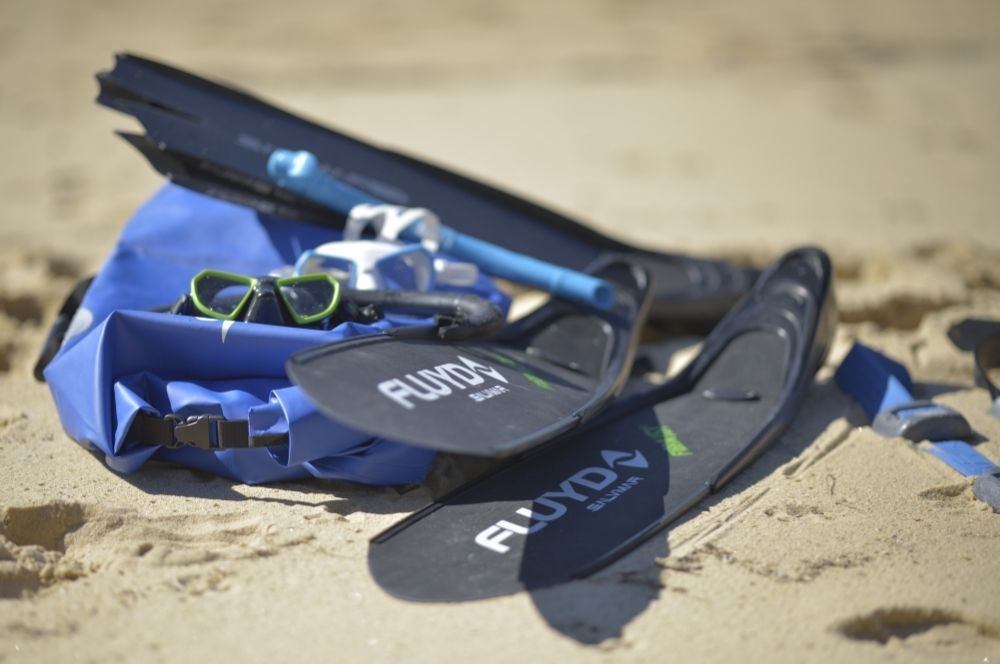
Despite the minimalist nature of breath-hold diving, it doesn’t suggest a lack of gear. On the contrary, the equipment chosen by breath-hold divers is specifically designed for efficiency and performance. Some essential gear for breath-hold diving includes:
-
Fins: These are not mere appendages but crucial tools for efficient propulsion, guiding the diver through the water with ease.
-
Masks: These are tailored for the task, with low volumes to facilitate equalization and better visibility.
-
Weight systems: These include rubber weight belts and neck weights selected for the desired depth and position in the water, ensuring the diver’s buoyancy is perfectly balanced at the pivotal moments of their dive.
This gear, when harmoniously combined, allows the breath-hold diver to move through the water with a grace that belies the effort behind it. Each piece, from the mask to the weights, is a testament to the fine balance between human ability and technological support that defines the sport of freediving.
Freediver Fins
Freediver fins are the extensions of the diver’s will, propelling them into the blue abyss with strokes that are as much an art as a technique. These fins come in materials that cater to the diver’s proficiency, with plastic for novices, fiberglass for intermediates, and the responsive whisper of carbon fiber for those who have mastered the depths. The correct fit is critical, with special attention to the foot pocket ensuring that each kick translates into forward motion without causing discomfort or blisters.
In the underwater ballet of freediving, fins are akin to a dancer’s shoes—essential for performance and a reflection of the diver’s style. They are the means by which free divers cut through the water, their length and composition a perfect marriage of form and function that facilitates the pursuit of depth and the exploration of the ocean’s vastness.
The Risks and How to Mitigate Them
Chasing serenity beneath the waves comes with its set of dangers. Breath-hold diving carries the risk of:
-
Shallow water blackout
-
Barotrauma
-
Nitrogen narcosis
-
Decompression sickness
These hazards escalate with the depth and frequency of dives. Awareness and preparation are the diver’s primary defenses, with a comprehensive understanding of the risks and adherence to safety protocols essential for mitigating these dangers. Incorporating a mix of dry training and aerobic and anaerobic exercises into one’s regimen can help condition the body to the unique demands of underwater diving.
Yet, it is the unexpected that often poses the greatest threat, such as the sudden onset of hypoxic syncope within the last few meters of ascent, a phenomenon that can strike in the seemingly benign environment of a swimming pool. The key to safety lies not only in training but in a culture of vigilance and preparedness that every breath-hold diver must adopt as second nature.
Recognizing and Preventing Shallow Water Blackout
Every diver’s ascent is shadowed by the insidious risk of a shallow water blackout, which strikes silently. It is the result of hyperventilation before a dive, a common mistake that delays the body’s natural urge to breathe and can lead to a loss of consciousness without warning. To prevent such a perilous outcome, divers must avoid hyperventilation, instead of relying on relaxation and controlled breathing to prepare for the dive.
The safeguard against this invisible threat is clear: never dive alone. The buddy system is a fundamental pillar of breath-hold diving safety, ensuring that someone is always there to assist if the unthinkable occurs. Through mutual vigilance, divers can enjoy the profound depths while ensuring that their adventures remain within the bounds of safety.
Buddy System and Safety Protocols
The bond between diving buddies extends beyond camaraderie; it’s a pact of protection. Each diver is responsible for their partner’s safety, accompanying them during the final ascent and remaining alert for signs of distress. This system of mutual supervision is built on trust and the understanding that the ocean, for all its beauty, is an environment that demands respect and caution. By following the principles of the Divers Alert Network, diving partners can ensure a safer and more enjoyable experience.
Regular safety drills and a one-up-one-down policy are integral components of this system, ensuring that divers are prepared for any eventuality and that each breath-hold dive ends as it should—with both divers safely at the surface. It is through these protocols that the freediving community fosters an ethos of safety that enables divers to push their limits with confidence and return to tell the tale.
PADI Freediver Course: A Gateway to Underwater Adventures

For those enticed by breath-hold diving, the PADI Freediver Course offers a gateway to underwater adventures. This comprehensive program welcomes individuals from all walks of life, requiring no prior experience with snorkeling, skin diving, or freediving. It stands as a testament to the accessibility of freediving, with only a few prerequisites: a minimum age of 15, adequate swimming skills, and good health, although a basic freediver certification can be obtained from the age of 12.
The PADI Freediver Course serves not only as a training program but also an initiation into a community that values the ocean’s depths. Prospective students are carefully screened through a medical history form, ensuring that each participant can safely engage in the sport’s demands. With medical clearance, if required, the journey into the world of breath-hold diving begins, guided by experienced instructors and underpinned by the PADI Freediver’s comprehensive curriculum.
Course Content and Goals
The PADI Freediver Course unfolds in structured phases, each designed to build the diver’s skills and confidence. From knowledge development to confined water sessions and the open waters of the sea, the course covers the essential facets of freediving. The theoretical foundation is laid through eLearning or classroom sessions, while practical skills are honed in the controlled environment of a swimming pool and then tested in the open water.
The goals are clear and achievable: a static apnea of at least 90 seconds, a dynamic apnea swim of 25 meters, and the ability to perform constant weight freedives to a depth of 10-16 meters. These milestones represent the diver’s progression, each an achievement that brings them closer to the freedom and wonder of the aquatic realm.
Starting Your PADI Freediver Journey
Embarking on the PADI Freediver journey is a dive into the digital age, with the PADI Freediver eLearning mobile app serving as the first plunge. It’s an interactive gateway that allows students to begin their training anywhere, at any time, with the curriculum at their fingertips. The app not only provides the necessary study tools but also concludes with a Review and Exam to ensure that each prospective diver has mastered the foundational knowledge before progressing to in-water training.
Once the eLearning component is completed, instructors guide students through the practical elements of freediving, from breath-hold techniques to proper buddy procedures. This blend of self-guided study and hands-on instruction creates a comprehensive learning experience that equips divers with the knowledge and skills they need to safely and confidently explore the underwater world.
Advanced Techniques in Breath Hold Diving
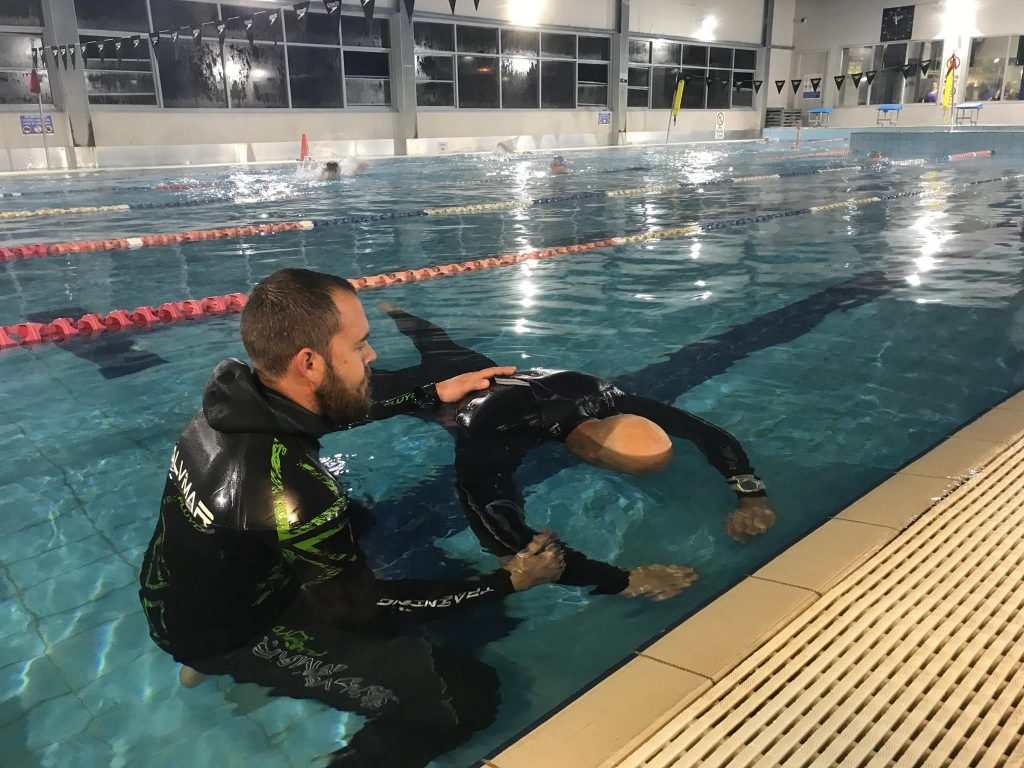
Once the basics are mastered, the journey towards advanced breath-hold diving begins, characterized by a commitment to refining techniques and mental strength. Advanced techniques stretch beyond the physical realm, requiring a harmonious blend of streamlined body positioning, efficient finning, and the kind of mental conditioning that transforms the ocean’s pressure into a meditative embrace. Specific training exercises are tailored to each diver, aiming to enhance muscle strength, lung capacity, and, crucially, the ability to manage high levels of carbon dioxide—a marker of true proficiency in the sport.
The journey of an advanced breath-hold diver is one of continuous self-discovery and improvement. It’s a testament to the transformative power of breath-hold training, where every session brings a deeper connection to the water and a heightened awareness of the body’s capabilities. This progression is not merely about reaching greater depths but about experiencing the underwater world with an increased sense of presence and control.
Dynamic Apnea and Constant Weight Training
Dynamic Apnea and Constant Weight training are the crucibles in which advanced freedivers are forged. These disciplines focus on the nuances of horizontal underwater swimming and the precise control required for free immersion and constant weight freedives. In the pool, dynamic apnea is a dance of breath and movement, where divers strive to cover as much distance as possible on a single breath, with the goal of extending their dynamic breath hold dives far beyond the 25 meters.
In the open water, constant weight training is a gravity-defying journey, with divers descending and ascending using only their fins or a monofin, their bodies a single streamlined entity with the ocean. These training sessions are not only about physical conditioning but also about developing a seamless connection between mind, body, and water—a synergy that allows for graceful descents and ascents, pushing the limits of what is possible on a single breath.
Mental Conditioning and Relaxation
The depths demand not only physical strength but also mental prowess. Mental conditioning and relaxation are the silent weapons in a freediver’s arsenal, as critical as the air in their lungs. Techniques such as meditation and visualization are practiced on land, sculpting a diver’s mindset to maintain calm in the face of the ocean’s vastness and the challenges of extended dives. This mental conditioning teaches divers to manage stress and conserve oxygen, to embrace the silence rather than to struggle against it.
Mindfulness during a dive is a cultivated trait, achieved through setting achievable goals and focusing on the present moment. It’s about creating a bubble of tranquility amidst the underwater currents, a state in which the diver is acutely aware of every heartbeat, every movement, and every thought. Such focus is what allows elite breath-hold divers to push the boundaries of human breath-hold diving and emerge not only unscathed but also enriched by the experience.
The Competitive World of Freediving
The competitive stage of freediving is where top breath-hold divers demonstrate their expertise in the sport. Governed by organizations such as AIDA International and CMAS, this world is one of discipline, precision, and the relentless pursuit of surpassing human limits. Competitors from around the globe come together to challenge and inspire one another, setting world records that redefine the possibilities of human breath-hold diving.
It is within these competitive depths that freedivers, including diving women, not only race against one another but also against their own personal bests. Men and women alike compete across all eleven recognized disciplines, from the controlled environment of a swimming pool to the open seas, where each breath taken is a step towards victory. The competitive spirit of freediving is not just about winning but about the shared journey of pushing the envelope of what is possible beneath the waves.
Disciplines and Records
The hall of fame in freediving includes athletes like Herbert Nitsch, who boasts 33 official world records across all AIDA-recognized disciplines, demonstrating a near superhuman ability to master the depths. His accomplishments span the spectrum of freediving, from No-Limits to Static Apnea to Free Immersion, each record a testament to his dedication to the sport. Nitsch’s remarkable feat at the 2009 Vertical Blue competition, where he reached 109 meters in Free Immersion and 120 meters in Constant Weight, is etched into the annals of freediving history.
The achievements of Nitsch and other elite freedivers are not mere personal triumphs but milestones that inspire the entire community. They demonstrate the extraordinary potential of human breath-hold diving and serve as a benchmark for those who follow in their wake. The records set in the serene depths of Dean’s Blue Hole or the competitive confines of a pool are not just numbers; they are stories of human endeavor and aquatic exploration.
Training Regimens for Competitors
Competitive freediving demands a combination of specialized equipment and rigorous training routines. Athletes utilize tools like:
-
torpedo-type sleds to simulate the conditions of extreme dives
-
weights to help them descend and maintain neutral buoyancy
-
monofins to increase propulsion and efficiency in the water
These tools allow competitors to refine their technique and enhance their performance. Additionally, a physical fitness training regime tailored to the demands of breath-hold training is crucial for success in competitive freediving.
The dedication of these athletes to their craft is evident in their meticulous preparation. Innovations in training devices, such as those employed by Herbert Nitsch, enable freedivers to reach astonishing speeds during their ascents and descents, pushing the boundaries of the sport ever further. The success of these competitors hinges not just on their physical capabilities but also on their access to and mastery of the advanced equipment that supports their quest for excellence.
Exploring Recreational Freediving
As a gentler version of the competitive sport, recreational freediving shifts the focus from performance to experience. It’s a pursuit accessible to the masses, attracting both novices and seasoned divers to the delights of underwater exploration without the constraints of intensive training. The appeal lies in:
-
the intimacy of the encounters with marine life
-
the tranquility of the silent world below
-
the personal satisfaction of pushing one’s limits at a leisurely pace.
The allure of freediving is not merely in the act itself but in the sense of connection it fosters with the marine environment. Divers are encouraged to:
-
Maintain a safe distance from marine life
-
Observe without disturbing
-
Dive with a conservation-minded approach that respects the delicate balance of the underwater ecosystem
It’s a sport that offers a unique perspective on the world beneath the waves, one where the diver is a guest in the vast aquatic expanse, free to explore but always with a mindful approach to the fragility of the ocean’s inhabitants.
Recreational vs. Competitive Freediving
Despite sharing the same fundamental skills, recreational and competitive freediving differ in their essence and objectives.
The recreational diver seeks:
-
enjoyment and relaxation
-
embracing the underwater environment at a pace that suits their comfort and interest
-
no pressure to perform or achieve, only the desire to immerse oneself in the beauty of the ocean and the unique experience of moving through the water unencumbered by scuba gear.
In contrast, competitive freediving is characterised by:
-
a rigorous focus on pushing boundaries and setting records
-
a disciplined and often intense training regime
-
athletes driven by the desire to compete against others and themselves
While recreational freediving is about personal discovery and the joy of the experience, competitive freediving is a testament to human potential and the relentless pursuit of the absolute limits of breath-hold diving.
Enjoying Marine Life Responsibly
Freedivers, as they glide through the water, become privileged observers of the ocean’s wonders. Responsible interaction withmarine life is a cornerstone of the sport, with divers encouraged to observe but not interfere. The practice of keeping a safe distance from creatures and their habitats ensures that the impact of human presence is minimized and that the underwater world remains as undisturbed as possible.
The philosophy of responsible freediving extends beyond passive observation; it is an active commitment to the preservation of marine ecosystems. By adhering to principles of conservation and respect, freedivers not only enjoy the marvels of marine life but also contribute to their protection. It’s a harmonious relationship, where the diver’s enjoyment of the ocean’s beauty is balanced with a responsibility to safeguard it for future generations.
Summary
In the tranquil depths of the ocean, breath-hold divers find a world that challenges the limits of the human body and spirit. From the ancient practice of freediving to the modern feats of competitive athletes, this sport embodies a profound connection to the water that has captivated humanity since time immemorial. As we’ve explored the techniques, risks, and rewards of breath-hold diving, it’s clear that mastering this art is as much about mental strength and discipline as it is about physical prowess. Whether one seeks the thrill of competition or the meditative peace of a recreational dive, the journey into the depths is a testament to the enduring allure of the underwater world. May this exploration inspire you to take your own breath and dive into the boundless possibilities that await beneath the waves.
Frequently Asked Questions
How long can you hold your breath underwater?
The average healthy person can typically hold their breath underwater for 3-5 minutes, but this may vary based on factors like physical fitness and training. Overall, it's important to be cautious and aware of the risks, such as the potential for passing out when attempting to hold your breath for a prolonged period.
What is the primary difference between breath-hold diving and scuba diving?
The primary difference between breath-hold diving and scuba diving is that breath-hold diving relies on the diver's ability to hold their breath without the use of breathing apparatus, while scuba diving uses equipment to breathe underwater. Breath-hold divers must manage their oxygen consumption and depth limits, while scuba divers can stay underwater for extended periods due to their breathing gear.
How do trained breath-hold divers increase their lung capacity?
Trained breath-hold divers increase their lung capacity through techniques like glossopharyngeal breathing, segmented breathing, and various stretching exercises, enabling them to achieve deeper and longer dives.
Can anyone learn to freedive, or is it only for elite athletes?
Yes, freediving is accessible to anyone with adequate swimming skills and good health, as courses like the PADI Freediver Course require no previous experience and provide training for both novices and experienced divers.
What are some safety measures that breath-hold divers should take?
It's essential for breath-hold divers to dive with a buddy, follow a dive plan, avoid hyperventilation, equalize pressure, and take breaks between dives to reduce the risk of shallow water blackout and other diving injuries.
Recent Posts
